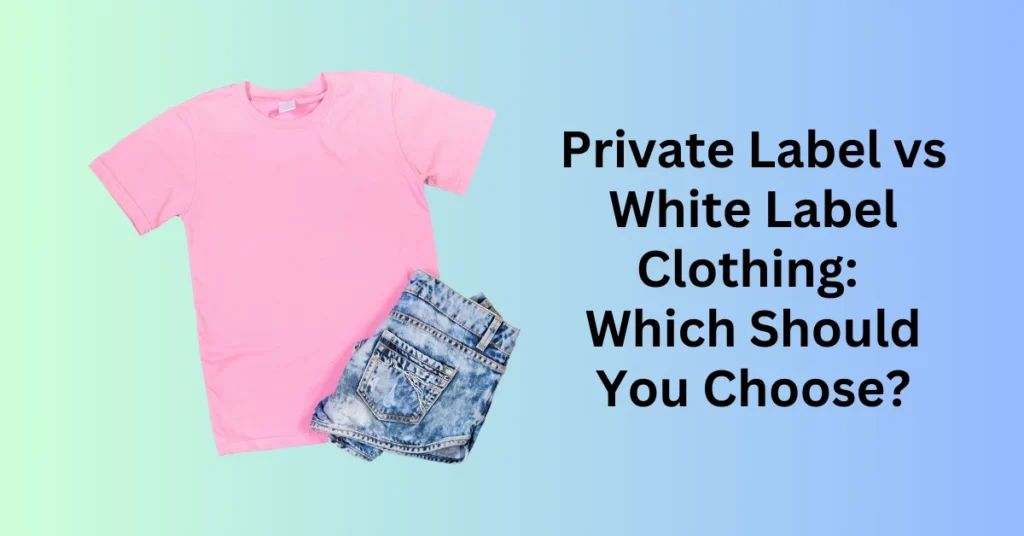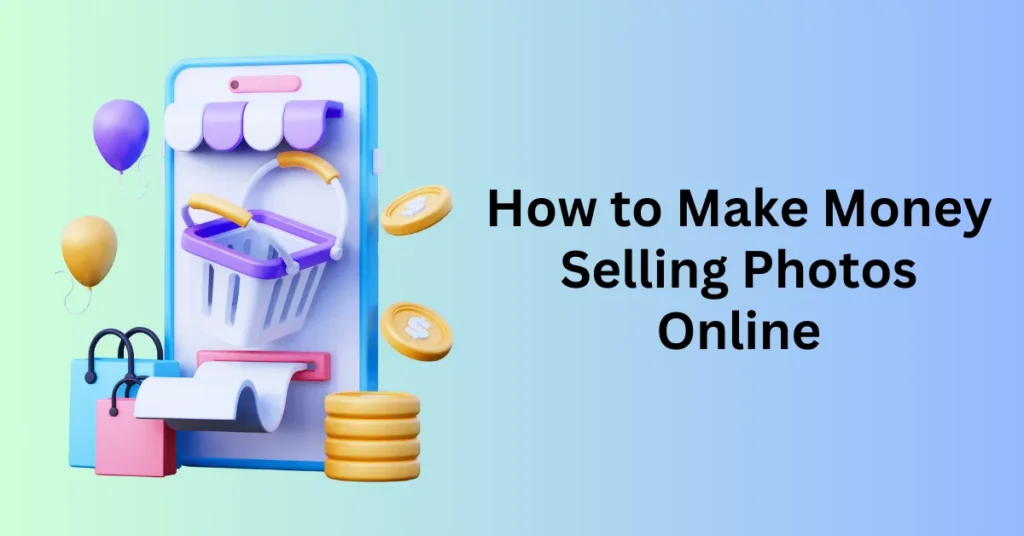There has never been a greater variety of ways to start an online clothing business, including options like dropshipping, white-label products, private labelling, and print-on-demand. With so many approaches, each with its nuances, it’s easy to feel overwhelmed by the choices available.
This article aims to clarify these options by exploring the differences between white-label and private-label clothing. It will provide an overview of the advantages and disadvantages associated with each approach, offer examples of white-label clothing, and guide you through the process of starting a white-label clothing business using Printify.
Start Your Clothing Business with Printify Today
What is White-Label Clothing?
White-label clothing refers to apparel that is manufactured by one company but branded and sold by another under its own name. Essentially, a white-label product is a blank slate that can be customized with different branding elements, allowing businesses to offer unique products without needing to invest in manufacturing or managing inventory.
For instance, if you partner with a print-on-demand service like Printify, you can create and design a range of clothing and accessories, which are then produced and sold under your brand. Importantly, the original manufacturer’s name does not appear on the final product, making it seamless for sellers to build their brand identity.
What is Private Label Clothing?
Private labelling is a business model where a retailer or brand commissions a third-party manufacturer to produce products that are then sold under the retailer’s or brand’s own label and branding. Unlike white labelling, where products are generic and simply rebranded, private labelling involves a more collaborative approach.
In private labelling, the retailer or brand typically works closely with the manufacturer to develop and refine the product to meet specific needs or preferences. This process can include customizing the product’s design, packaging, and even some elements of the formulation or construction.
White Label vs Private Label
White-label clothing involves items produced by a third-party manufacturer that are available for retailers to rebrand with their own logos and design elements. This model is often chosen for its cost-effectiveness and ease, enabling retailers to launch their clothing lines without substantial upfront investments quickly. Besides, the focus here is on leveraging existing products and simply applying new branding.
In contrast, private-label clothing also uses products made by a third party but typically requires a closer working relationship with the manufacturer. Private labelling often involves more detailed collaboration on product design, allowing sellers greater influence over the base product’s characteristics, such as fabric, cut, and features. This means sellers can create more distinctive products, but the process is generally more involved and time-consuming compared to white labelling. The primary distinction between the two approaches lies in the level of customization and control, with private labelling offering deeper involvement in the product’s development compared to the more straightforward white-label approach.
White Label Clothing Pros and Cons
| Pros | Cons |
| Low Start-Up Costs: Lower initial investment compared to producing your own designs or manufacturing. | Limited Customization: Customization options might be limited to the supplier’s existing products. |
| Faster Time to Market: You can start selling products quickly since they are ready-made. | Potentially Higher Costs per Unit: Per-unit costs can be higher than manufacturing in bulk if you have a large order volume. |
| Established Quality: Products are often produced by experienced manufacturers, ensuring a certain level of quality. | Dependence on Supplier: You rely on the supplier for product availability and quality control. |
| Branding Opportunities: Ability to brand products with your own logo and packaging. | Market Saturation: High competition if multiple brands use the same white label products. |
| Focus on Marketing and Sales: You can focus on marketing and selling rather than manufacturing and logistics. | Limited Control Over Supply Chain: Less control over production timelines and quality issues. |
| Scalability: Easier to scale up your business as demand increases without needing to scale production. | Possible Lack of Unique Selling Proposition: Products may not be unique, which can affect differentiation in the market. |
| Less Risk in Product Development: Lower risk in product development since you’re using proven designs. | Brand Reputation Risks: Any issues with the supplier’s products or processes can impact your brand. |
Private Label Clothing Pros and Cons
| Pros | Cons |
| Unique Branding: Allows for unique branding with custom designs and labels. | Higher Initial Costs: Higher costs for development, design, and manufacturing. |
| Customization Options: Greater control over design, quality, and specifications. | Longer Time to Market: It may take longer to bring products to market due to the development process. |
| Exclusive Products: Products are exclusive to your brand, which can help with differentiation. | Minimum Order Quantities: Suppliers often require minimum order quantities, which can be costly. |
| Brand Loyalty and Recognition: Custom designs can help build a strong brand identity and customer loyalty. | Increased Risk: Higher risk if the product doesn’t meet market expectations or if there are issues with the supplier. |
| Higher Profit Margins: Potentially higher profit margins due to unique products and higher perceived value. | Complex Supply Chain Management: Managing production, quality control, and logistics can be complex. |
| Control Over Quality and Design: Direct influence over the quality and design of the products. | More Intensive Management Required: Requires more time and effort to manage the entire process, including working closely with manufacturers. |
| Ability to Create a Niche Market: Opportunity to create niche products that cater to specific customer segments. | Intellectual Property Concerns: Risk of competitors copying designs or concepts if not protected legally. |
Clothing Products You Can Sell White Label or Private Label
When selecting a white label or private label clothing manufacturer, the variety of custom label options you receive is determined by the manufacturer. For instance, with Printify, you can design a range of label types including inside labels, outside labels, and tearaway labels. This flexibility allows you to enhance the branding and presentation of your products.
To find garments with specific branding options, you can use Printify’s Catalog filters. This feature helps you easily locate products that match your branding needs, ensuring that your custom designs are well-represented.
Printify offers a variety of clothing products that you can sell as white-label or private-label items. Here’s a list of some popular clothing options you can consider:
- T-Shirts: Available in various styles and fits, including basic tees, v-necks, and fitted shirts.
- Hoodies and Sweatshirts: Perfect for colder weather and come in various styles, such as pullover hoodies, zip-up hoodies, and crewneck sweatshirts.
- Long Sleeve Shirts: Great for layering and available in different styles and fabrics.
- Tank Tops: Ideal for warmer weather or as workout wear.
- Leggings: Popular for both casual wear and athletic use, available in various prints and sizes.
- Sweatpants: Comfortable and versatile, available in different styles such as joggers and classic sweatpants.
- Baseball Tees: Often have a distinctive look with contrast sleeves and are popular for casual wear.
- Zip-Up Jackets: Useful for layering and available in different materials and styles.
- Vests: Great for adding a stylish layer to outfits without the bulk of sleeves.
- Dress Shirts: For a more formal look, suitable for business and special occasions.
For white-label or private-label branding, you can customize these items with your own labels, tags, and packaging to create a unique brand experience for your customers.
These options allow you to create a diverse and appealing clothing line tailored to your brand’s identity and your customers’ preferences.
Start Your Clothing Business with Printify Today
Starting a white-label clothing line with Printify in 8 steps
Printify is one of the best POD company to partner with for white labelling, according to Forbes. Starting a white-label clothing line with Printify involves a series of strategic steps that help you launch and manage your own branded apparel business. Here’s a detailed guide on how to achieve this in seven steps:
1. Define Your Niche and Brand Identity
The first step in starting a white-label clothing line is to define your niche and establish your brand identity. Firstly, begin by conducting market research to understand current trends, customer preferences, and gaps in the market. Choose a niche that aligns with your interests and has a demand, such as fitness apparel, sustainable fashion, or trendy streetwear. Once you’ve identified your niche, create a strong brand identity. This includes developing a memorable brand name, designing a unique logo, and crafting a compelling brand story that resonates with your target audience. Your brand identity will then set the foundation for your business and help you connect with potential customers.
Start Your Clothing Business with Printify Today
2. Sign Up for Printify
Then, the next step is to sign up for Printify, which is a platform that enables you to create and sell custom-designed clothing. Start by visiting the Printify website and creating a free account. You’ll need to provide basic information, such as your email address and password. After setting up your account, you’ll then need to integrate Printify with your chosen eCommerce platform to streamline your operations.
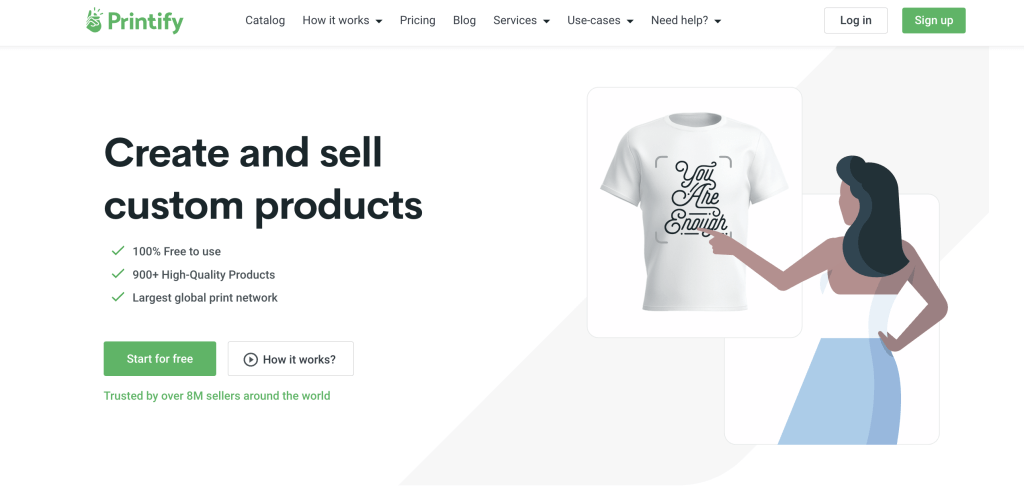
3. Integrate Printify with Your eCommerce Platform
Integrating Printify with an eCommerce platform like Shopify or Etsy is crucial for managing your store efficiently. To integrate with Shopify, firstly go to the Shopify App Store, search for Printify, and install the Printify app. Then, follow the prompts to connect your Printify account with your Shopify store. For Etsy, on the other hand, visit the Printify dashboard, go to the “Manage My Stores” section, and follow the instructions to connect your Etsy account. This integration will allow you to sync product listings, manage orders, and track sales seamlessly from within Printify and your eCommerce platform.
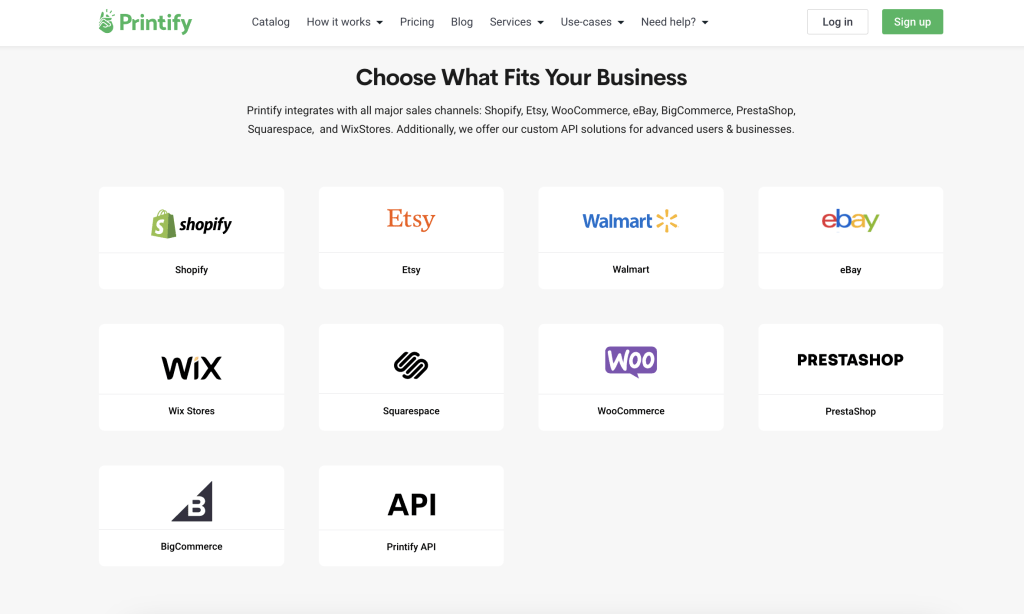
4. Design Your Clothing Line
Once your accounts are set up and integrated, focus on designing your clothing line. Printify offers a wide range of products, so select the items you want to offer, such as t-shirts, hoodies, or hats. Use graphic design software like Adobe Illustrator, Canva, or Photoshop to create high-quality designs that meet Printify’s specifications. These designs should be visually appealing and aligned with your brand identity. Then, upload your designs to Printify’s mockup generator to see how they will look on the selected clothing items. This tool helps you visualize the final product and make adjustments as needed before moving forward.
5. Customize and Brand Your Products
After finalizing your designs, it’s time to then customize and brand your products. Printify also provides options for adding custom labels, packaging, and inserts, which can enhance the presentation of your products and reinforce your brand identity. You can then incorporate your logo and other branding elements into your clothing items to create a cohesive and professional look. Review the mockups carefully to ensure that everything appears as intended. This step is crucial for establishing a strong brand presence and ensuring that your products stand out in the marketplace.
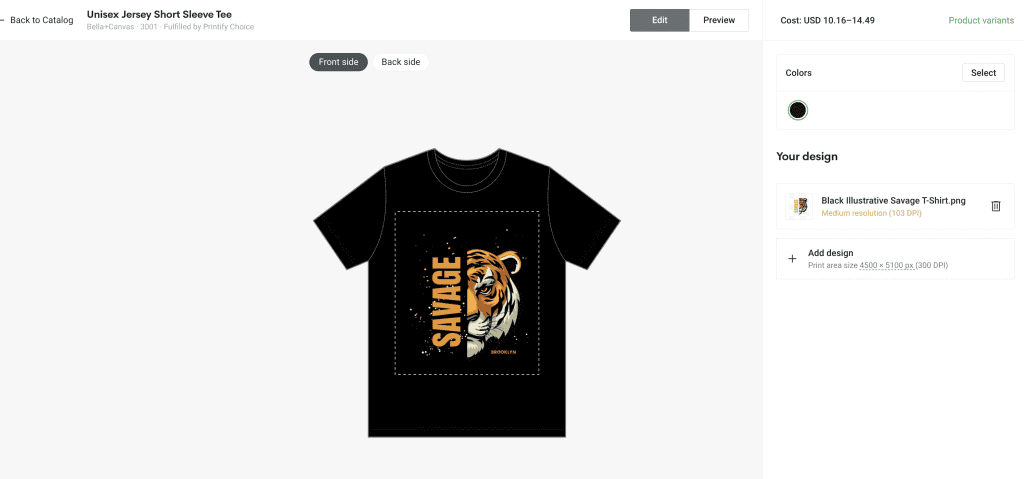
6. Set Pricing and Create Product Listings
With your designs and branding in place, the next step is to set pricing and create product listings. Determine the pricing for your clothing items by considering factors such as production costs, shipping fees, and your desired profit margin. Printify provides pricing information based on your product choices and customization options. Write detailed and engaging product descriptions that highlight the features, benefits, and unique aspects of your clothing line. Use high-quality images and compelling descriptions to attract potential customers and encourage them to make a purchase.
7. Launch Your Store
Before officially launching your store, conduct thorough testing to ensure that everything is functioning correctly. Place test orders to verify that the purchasing process is smooth and that the products are printed and shipped as expected. Once you’re confident that everything is in order, go live with your store. Promote your new clothing line through various marketing channels, such as social media, email campaigns, and influencer partnerships. Effective promotion is key to driving traffic to your store and generating sales.
8. Manage and Scale Your Business
The final step involves managing and scaling your business. Monitor your store’s performance by tracking sales, customer feedback, and product metrics. Utilize analytics tools provided by your eCommerce platform to gain insights into customer behaviour and sales trends. Based on this data, make informed decisions to optimize your product offerings, marketing strategies, and customer service. Continuously seek ways to improve and expand your business, such as introducing new products or exploring additional marketing channels to reach a broader audience.
By following these eight steps, you can effectively start and grow a white-label clothing line with Printify, ensuring seamless integration with your eCommerce platform and a successful launch of your custom-designed apparel.
Final Thoughts: Private Label vs White Label Clothing: Which Should You Choose?
Navigating the world of private and white-label clothing offers exciting opportunities for entrepreneurs and brands looking to create unique and customizable apparel. Whether you’re drawn to the flexibility of private labelling or the simplicity of white labelling, understanding the key differences and benefits of each approach is crucial for making informed decisions.
Private-label clothing allows for deeper collaboration with manufacturers, offering the chance to influence product design and create distinctive items that align closely with your brand’s vision. This level of customization can lead to greater brand differentiation and higher profit margins, but it also involves a more involved process and longer lead times.
On the other hand, white-label clothing provides a streamlined path to branding and selling apparel without the need for extensive development. By rebranding existing products, you can quickly launch a clothing line with minimal upfront investment, making it an attractive option for those looking to enter the market swiftly.
Ultimately, the choice between private and white-label clothing depends on your business goals, resources, and the level of control you wish to have over the product. Whether you opt for the tailored approach of private labelling or the efficiency of white labelling, both strategies offer valuable pathways to build and grow a successful clothing brand.
By leveraging the right manufacturer and understanding your branding needs, you can also create a compelling clothing line that resonates with your target audience and stands out in a competitive market. As you embark on this journey, keep in mind that the key to success lies in finding the perfect balance between customization, quality, and brand identity.
